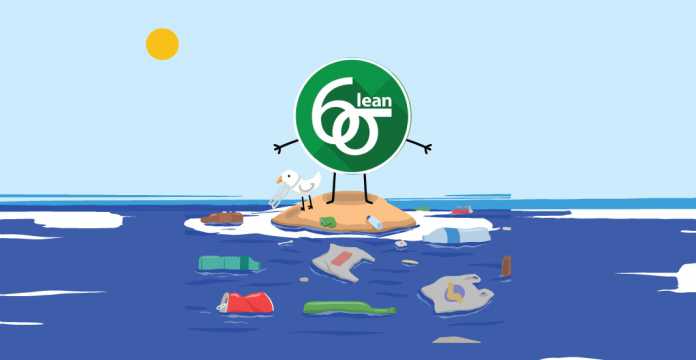
The main focus of the Lean philosophy is to eliminate waste from all processes involved in the workplace. Waste hampers growth and takes up time and resources in an organization and from the employees. So, what exactly is Lean waste?

What is Waste in Lean Manufacturing?
Waste in Lean Six Sigma can be described as all the actions and steps in any existing process which does not add value to the end-user or customer. There are 8 main types of waste that exist in the manufacturing of any product.
Originally there were seven wastes, created by the chief engineer at Toyota, Taiichi Ohno. He wanted to make the manufacturing process faster with fewer hindrances and increase productivity at the same time, which is why he created the Lean method of manufacturing, which was then implemented in the services industry as well after gaining widespread popularity.
The original seven wastes are listed below:
- Transportation
- Inventory
- Motion
- Waiting
- Overproduction
- Overprocessing
- Defects
These seven wastes were referred to as TIMWOOD, but the eighth waste was added to the list. Skills, the eighth waste, was later introduced making the acronym TIMWOODS. The article below has a brief description of each waste and how to minimize them using Lean Six Sigma.
Eight Types of Waste in Lean Six Sigma
- Transport
The first type of waste in Lean Six Sigma was identified to be waste in transportation. This includes the excessive movement of the following:
- People
- Tools
- Inventory
- Equipment
- Products
Movement of the following more than what is necessary can lead to an additional workload for employees, increased wear and tear, as well as exhaustion.
- Inventory
Usually, inventory is seen as an asset, but excessive inventory can actually become a waste over time. It can lead to a lot of problems such as
- An increase in damaged or defective products
- Misallocation of capital
- Increase in lead time
- Additional problems being covered up by inventory
Additional inventory can lead to avoidance or delay in detection of any problems related to production because of the sheer quantity of products. This can lead to additional work created to manage the defects.
Inventory waste inside an office that could hamper productivity includes:
- Files that have not been worked on
- Poor customer service
- Obsolete files
- Unused records that exist in the database
Inventory waste in manufacturing includes:
- Broken machines not being repaired or disposed of
- A higher number of finished products than required
- Extra materials that take up space
- Finished unsold products
- Motion
Motion waste is the excessive movement of the people or the machinery inside a facility. This means more than necessary:
- Walking
- Lifting
- Reaching
- Bending
- Stretching
- Moving
- Reaching to get materials
- Searching for files
- Browsing inventory
- Double data entry
- Repetitive actions which do not add value
- Readjustment of components
- Waiting
An increased waiting period is usually because of collaboration between workstations in an office or a facility. This waste includes the following:
- People waiting on material or equipment
- People waiting on a response
- Idle equipment
- Files waiting for review
- Ineffective meetings
- Waiting for the computer
- Waiting for the proper instructions
- Insufficient equipment
- Overproduction
Overproduction waste takes place when facilities make the products without the requirements being set. This can result in the following wastes either in an office or in a production facility:
- Hampering the flow of the work
- Increased storage charges
- Cloaking existing defects
- Increase in the required capital for production
- Increased lead time
- Excessive amounts of the product or service as compared to the requirements
- Over-processing
This type of waste is the addition of unnecessary components or steps in a product or a service. Customers do not need these additional steps or parts, but the manufacturers, developers, or service providers do more work to provide them anyway.
This is the overprocessing waste in Lean Six Sigma, and it can include:
- Using more complex equipment than necessary
- Using excessive components
- Running extra analyses
- Over-engineering a solution
- Unnecessary adjustment of a component once installed
- Having excessive functionalities in a product
- Generating reports with too much detail,
- Adding extra steps to the purchasing process
- Additional processes than what is necessary
- Double data entry
- Extra steps in a workflow
- Defects
These are products unfit for consumption or use by the customers. Defective products need to be either reworked or completely scrapped. Reworking a product leads to additional time and resources required to fix the defect and scrapping the product is just a waste of cost. These wastes do not add any value to the customer and only cost the company money.
- Skills
The waste in skills was added later, it was not initially a part of the Toyota Production System (TPS). The waste in skills is the waste of human potential and talent. This usually happens when organizations do not include their employees in their management tasks. Employees need to be given more than just following orders and executions so that they can reach their full potential and use their knowledge and expertise to deliver results.
A waste of skills could include the following:
- Insufficient training
- Poor incentives
- No employee feedback
- Misallocation of employees
- Improper tools are given to employees to finish their tasks
- Lack of challenge for employees
How to Reduce Waste Using Lean Six Sigma?
Once the waste has been identified using the TIMWOODS method of Lean Six Sigma, then organizations can begin working towards reducing or eliminating it.
Companies often use Value Stream Mapping (VSM), which is a Lean management method, to help them understand the existing state of their company waste and to help them design the future state of waste in the company.
VSM easily maps out the processes, shows the relationship between them, and segregates the activities that add value and the ones which do not add value in a visual manner. VSM should be used by keeping the customer in mind while starting and tracing it back to the production processes.
Some tips to reduce the TIMWOODS waste using Lean Six Sigma, once it has been identified, are:
- Transportation – Reduce non-essential transportation in production by creating a U-shape production line or reducing the amount of work in progress. Companies can also create different flows between processes.
- Inventory – Improving the forecasting methods in the company, buying materials only when needed in the required quantity, and reducing gaps in production.
- Motion – Design the workstation in a way that minimizes movement in an organized, ergonomic fashion to reduce strain.
- Waiting – Improve communication and reduce waiting time so that companies can eliminate bottlenecks in their production process and have a continuous flow when they work.
- Overproduction – Create a made-to-order philosophy in companies by scheduling and forecasting. Use a Takt Time, reduce set up time, and use a Kanban system or a pull system to monitor the work in progress.
- Over-processing – Use Value Stream Mapping and analyze the value generated, starting from the customer and ending with the production house, to identify wasted effort.
- Defects – Use DMAIC to find the root cause of the problem and eliminate them. Design a process that helps in detecting any defects during production itself and standardizing all changes.
- Skills – Use incentives for employees and create a reward system to keep them motivated and use their talent to its full potential.
Final Thoughts
Lean Six Sigma has transformed the manufacturing industry and continues to generate a lot of impact in the service industry as well. By understanding the tools and processes involved in Lean Six Sigma, and the overall Lean methodology, companies can work much faster and increase their productivity. Training individuals and enterprise teams in popular quality management certification courses will help organizations to achieve the goal of getting rid of all 8 types of waste.
Some of the popular quality management courses through which the workforce can get trained to remove different types of waste in an organization are:
Lean Six Sigma Certification Online














